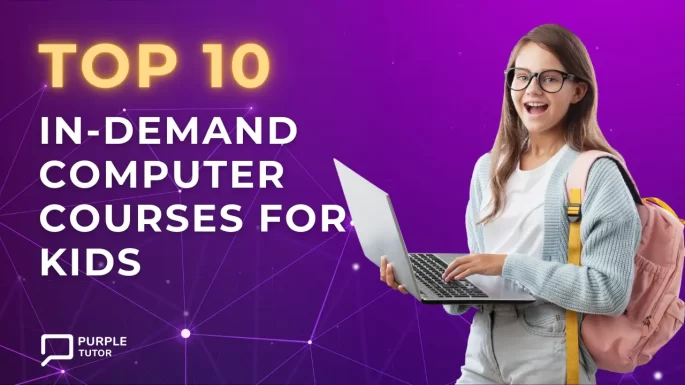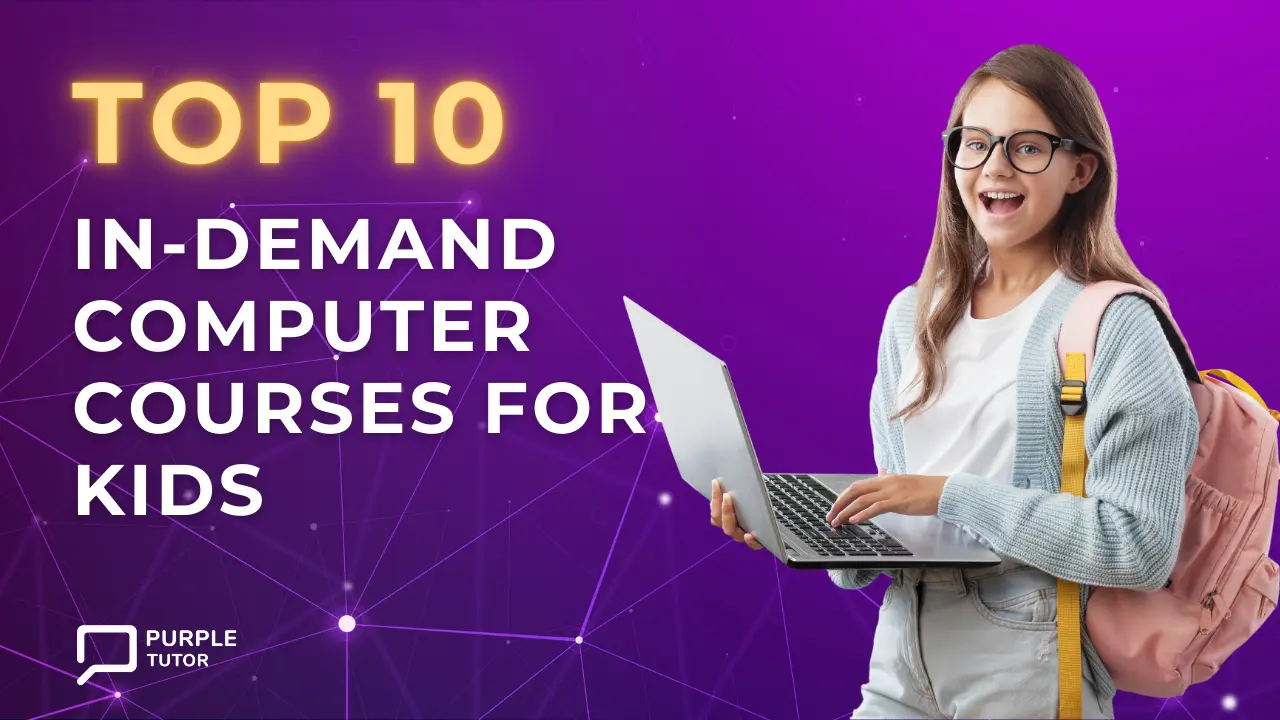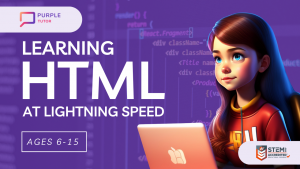 Learning HTML is not just a valuable skill; it’s a superpower that can set your child on a path to becoming a tech wizard. HTML, short for HyperText Markup Language, is the fundamental building block of the internet. It’s what allows us to create and display web content, shaping the online world as we know it. In this article, we’ll explore how kids aged 6-15 can learn HTML at lightning speed, unlocking their potential to create and innovate on the web. We’ll also introduce you to PurpleTutor’s live coding classes, designed to make this learning journey exciting and beneficial.
Learning HTML is not just a valuable skill; it’s a superpower that can set your child on a path to becoming a tech wizard. HTML, short for HyperText Markup Language, is the fundamental building block of the internet. It’s what allows us to create and display web content, shaping the online world as we know it. In this article, we’ll explore how kids aged 6-15 can learn HTML at lightning speed, unlocking their potential to create and innovate on the web. We’ll also introduce you to PurpleTutor’s live coding classes, designed to make this learning journey exciting and beneficial.
HTML Tutorial for Beginners: Building the Basics
Let’s start our HTML adventure with an HTML tutorial for beginners. HTML stands for HyperText Markup Language, and it’s the foundation of every web page you see on the internet. HTML uses tags to structure content on a web page, and understanding these tags is the first step in creating your own web pages.
HTML Basic Code
HTML begins with the basics, and kids are quick to grasp its fundamental concepts. Think of HTML as the “skeleton” of a web page. You’ll learn how to create headings, paragraphs, lists, and links using simple tags. These tags are like magic spells that transform your ideas into web content.
HTML Course: Dive Deeper
Once your child has mastered the basics, it’s time to dive deeper into our HTML course. We’ll introduce you to more tags, such as images, tables, and forms. These elements allow you to make your web pages interactive and visually appealing.
HTML Full Course
Our HTML full course covers everything from structuring content to adding multimedia elements. We’ll explore advanced topics like CSS (Cascading Style Sheets) to make your web pages look stunning. By the end of this course, your child will have the knowledge and confidence to create their very own website.
Interactive Learning with PurpleTutor
At PurpleTutor, we understand that learning should be fun and interactive. Our live coding classes are designed to engage young minds while imparting valuable skills. Here’s why PurpleTutor is the perfect companion on your HTML learning journey:
- Engaging Curriculum: Our curriculum is tailored to suit the learning needs of kids aged 6-15. We use games, puzzles, and interactive exercises to make learning HTML a breeze.
- Experienced Instructors: Our instructors are not only experts in coding but also skilled in making complex concepts simple and fun. They’re passionate about nurturing young coding talents.
- Live Coding Sessions: In our live classes, your child will have the opportunity to code alongside their instructor and classmates. This real-time interaction fosters collaboration and confidence.
- Flexible Schedule: We offer flexible scheduling options to accommodate your child’s busy life. Whether it’s after school or on weekends, we’ve got you covered.
- Supportive Community: PurpleTutor fosters a supportive online community where kids can ask questions, share their projects, and learn from one another.
HTML Tutorial: Hands-On Practice
In our HTML tutorial, hands-on practice is key. We believe that the best way to learn HTML is by doing. Your child will have the chance to create their first web page right from scratch. Imagine the excitement when they see their name on a webpage they’ve built themselves!
HTML Course: Creativity Unleashed
One of the most exciting aspects of learning HTML is the limitless creativity it offers. Kids can design web pages about their favorite hobbies, create online stories, or even build a virtual clubhouse for their friends. HTML is the canvas, and imagination is the only limit.
HTML Tutorial for Beginners: Parental Support
As parents, you play a vital role in nurturing your child’s coding journey. Encourage their curiosity, ask about their projects, and celebrate their coding victories. By showing interest and support, you can fuel their passion for HTML and technology.
HTML Basic Code: Building a Foundation
HTML is the foundation upon which more advanced coding skills can be built. As your child progresses, they may become interested in JavaScript, CSS, and other web technologies. These skills will open doors to exciting opportunities in the tech world.
Conclusion: Coding Mastery with PurpleTutor
In conclusion, learning HTML at a young age can be a rewarding and empowering experience for children aged 6-15. With the right guidance and resources, they can quickly become proficient in HTML and web development. PurpleTutor’s live coding classes offer a dynamic and engaging way for kids to learn HTML and other coding skills, setting them on a path to success in the digital age.
So, if you’re ready to embark on this exciting journey of HTML learning with your child, check out PurpleTutor’s coding classes and watch them thrive in the world of web development. Don’t miss the opportunity to equip your child with the skills they need to excel in the 21st century!
Remember, with HTML, the sky’s the limit, and your child is the coder of the future. Let’s learn HTML and code the world together!
Frequently Asked Questions (FAQs)
- Is there a free trial class available?Absolutely, we provide a free demo class. You can conveniently schedule it using the provided link. This gives you the opportunity to firsthand experience our teaching methods.
- Can I select a class schedule that aligns with my availability?Certainly! Our scheduling is exceptionally flexible, allowing you to choose the day and time that best suits your personal schedule and preferences.
- Will I be granted certification upon successful completion of the online HTML course?Yes, upon successfully completing the coding course, you will receive a certificate acknowledging your achievement.
- What are the prerequisites for enrolling in PurpleTutor’s coding courses?To enroll in our Python courses, you will need a laptop or computer equipped with a webcam and a stable internet connection. While most of our courses do not require specific coding prerequisites, having a basic grasp of core Python programming concepts can be advantageous, especially for Data Science coding courses.
- Are there assessments included in the coding courses?Certainly, we routinely conduct assessments and provide feedback on your performance throughout the coding classes. Our aim is to track your progress and offer valuable guidance to enhance your learning journey.
- What courses are available through PurpleTutor?PurpleTutor offers a diverse array of advanced courses designed to prepare students for the future. Our Python course catalog encompasses Python programming, Web Development, Machine Learning, Artificial Intelligence, Cybersecurity, Roblox Game Development, and more. Additionally, we offer comprehensive math courses. Explore our complete course selection in the dedicated courses section or schedule a free class to experience our teaching and discuss various course options with our instructors.
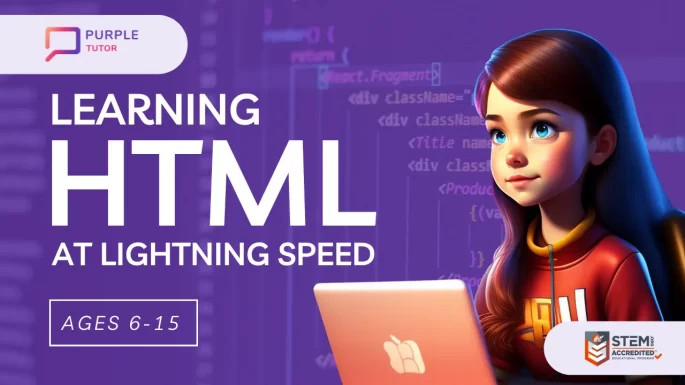

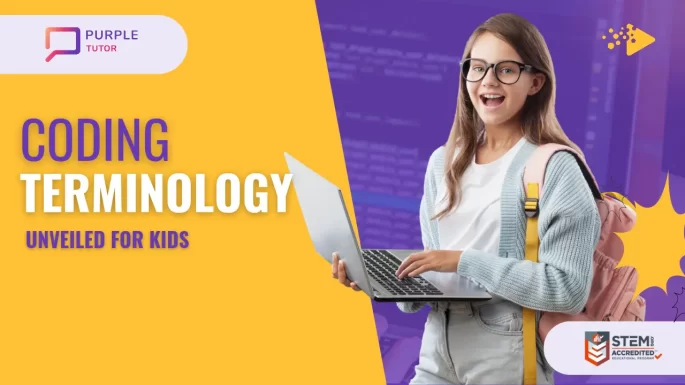
 Welcome to the fascinating world of
Welcome to the fascinating world of 